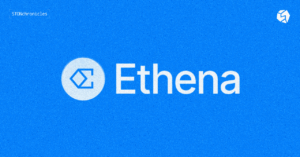
Staking has become one of the hottest topics in crypto, offering a way to earn passive income while helping secure blockchain networks. But what exactly is staking, and why should you care? If you’ve ever wanted to put your crypto to work without trading or mining, staking might be your answer.
Unlike Proof-of-Work (PoW) systems, which require energy-intensive mining, Proof-of-Stake (PoS) blockchains rely on staking—where users lock up tokens to support the network and earn rewards. One standout in the PoS space is The Open Network (TON), a blockchain designed for speed, scalability, and decentralization.
So, let’s break it down: how does staking work, why is it useful, what are the risks, and how can you stake your TON tokens today?
What is Staking?
Staking is the process of locking up cryptocurrency to support a blockchain network’s security and operations. In return, participants—also known as validators or delegators—earn rewards for their contributions.
When users stake their tokens, they essentially help maintain the integrity of the blockchain. Validators are chosen based on the number of tokens staked, and they validate transactions while securing the network.
Staking is like earning interest on your savings, but instead of a bank, you’re securing a blockchain network. When you stake, you lock up tokens to help validate transactions, and in return, you earn rewards.
Think of it like this: Imagine you and your friends open a community grocery store. Everyone contributes some money to keep it running. The store profits, and at the end of each month, you all split the earnings based on how much you invested. That’s staking in a nutshell—except instead of groceries, you’re securing a blockchain and earning rewards.
How Does Staking Work?
Here’s the step-by-step process:
- Choose a PoS blockchain – Each network has its own staking rules. TON, for example, runs on a Proof-of-Stake model.
- Stake your tokens – Users either run a validator node (big commitment) or delegate tokens to an existing validator.
- Validators confirm transactions – They process transactions and keep the network secure.
- Earn staking rewards – As a validator or delegator, you receive a share of the staking rewards.
Staking in the TON Ecosystem
TON is built on a PoS consensus mechanism, meaning it relies on staking rather than mining to validate transactions. It offers several ways to stake:
- Validators: Users who stake large amounts of TON to validate transactions.
- Delegators: Regular users who stake their TON tokens by delegating them to validators.
- Staking Pools: Community-run pools where multiple users stake together, increasing their chances of rewards.
🔹 Example in action: Imagine Tom, a developer who wants to support the TON network but doesn’t have enough tokens to run a validator. Instead, he joins a staking pool with other users, increasing their collective chances of earning rewards.
Why Stake? The Benefits
Staking isn’t just about earning rewards—it’s about actively participating in blockchain security. Here’s why staking is a game-changer:
✅ Earn Passive Income – Let your crypto work for you while you HODL.
✅ Support Network Security – The more tokens staked, the harder it is for bad actors to attack the network.
✅ Energy Efficient – Unlike Bitcoin mining, PoS networks like TON are eco-friendly.
✅ Encourages Decentralization – More stakers mean a more distributed and secure network.
🔹 Example: Lisa has been holding TON for months, waiting for its price to rise. Instead of letting it sit idle, she decides to stake her tokens and earn additional TON over time. Now, whether the market goes up or down, she’s still accumulating rewards.
Risks and Considerations
Like any investment, staking has risks. Here’s what you need to watch out for:
⚠️ Market Volatility – While you’re earning rewards, the token price can fluctuate.
⚠️ Lock-Up Periods – Some blockchains require you to stake for a set period before you can withdraw.
⚠️ Validator Risks – If you delegate to an unreliable validator, you could miss out on rewards or even lose some of your staked tokens.
🔹 Example: Mark staked his tokens with a validator promising high returns. However, the validator was penalized for bad behavior, reducing Mark’s rewards. Lesson learned: Always choose a reliable validator.
How to Start Staking on TON
Ready to stake? Follow these steps:
- Get TON tokens – Buy TON from a reputable exchange.
- Set up a wallet – Use a TON-compatible wallet like Tonkeeper or Tonhub.
- Choose a validator or staking pool – Research validators based on reputation and rewards.
- Stake your tokens – Delegate your TON and start earning rewards!
🔹 Example: Jake follows these steps and stakes his TON with a validator offering a fair rewards structure. Over time, he earns consistent staking rewards while supporting the TON network.
Wrapping Up
Staking is one of the easiest ways to earn passive income while actively securing a blockchain network. In the TON ecosystem, staking plays a crucial role in decentralization and security.
By understanding the risks, benefits, and staking options available, you can make smarter decisions and maximize your rewards. Whether you’re staking a little or a lot, every staker contributes to a stronger, more resilient blockchain.





